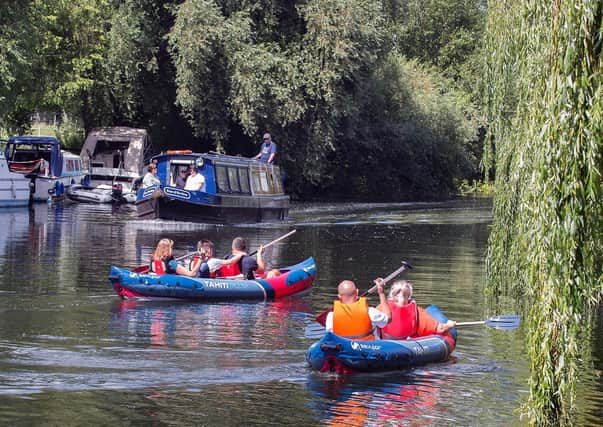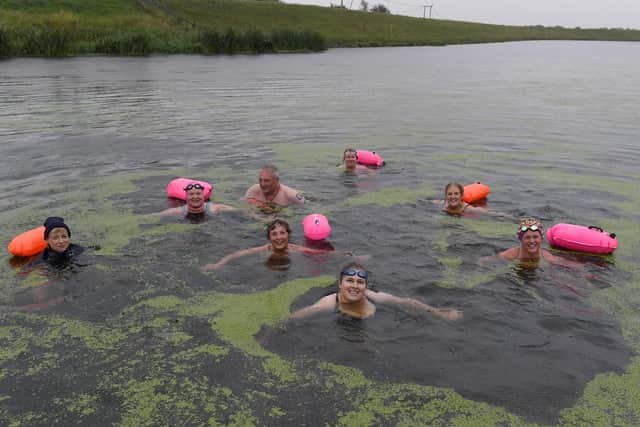Poor water quality of rivers in Peterborough area and rest of England branded ‘shameful’ by angling body


The last assessment showed that only 16 per cent of water bodies covered in the survey were ranked as being good. This latest assessment shows that figure has dropped to zero meaning it includes local watercourses such as the River Nene, River Witham and River Welland.
The latest assessment represents more accurate measurements that reveal the true poor state of our waters. Rather than a change in underlying condition, and the improvements needed if the government is going to meet its 2027 target of 75 per cent being classed as good, there has been no progress.
Advertisement
Hide AdAdvertisement
Hide AdThe River Nene is seen to be failing due to polution levels from rural areas and towns, waste water being allowed to flow into the river and alterations being made to the watercourse. It was a similar picture for the River Welland. The Witham was mainly affected by pollution from rural areas, farming and land management making alterations to the river.


The Angling Trust, which represents anglers in England and Wales, says the Government needs to urgently invest in turning these failing rivers into thriving blue corridors.
Stuart Singleton-White, Head of Campaigns at the Angling Trust, said: “The government has made great play that they want 75 per cent of rivers, lakes and streams to meet good standards by 2027. Today, we find out that none of them do. This is shameful. Our rivers are officially the dirtiest in Europe. So much for the Government’s ambition to leave the environment in a better state for future generations. This shows they are failing and failing badly.
“What we need is leadership, not excuses. The comprehensive spending review will be a real test to see if the political leadership our rivers, lakes and streams need is there. We have to see funding to clean up our environment massively increased. We need regulators who can do their job properly and we need to hold polluters to account.
Advertisement
Hide AdAdvertisement
Hide Ad“From the UN to Sir David Attenborough we have heard time and again about the biodiversity crisis we are facing. Freshwater biodiversity is the most at risk. If ever there was a time for action, it is now. We can’t wait, our fish can’t wait, our rivers can’t wait.”
The new Environment Agency figures show that:
Every single surface water body monitored by the Environment Agency in England has failed the chemical standards, meaning that none have a clean bill of health overall
The failure rate on many other measures of good water health has shown little or no improvement, the most important being assessments of ecological status. Only 16 per cent of English waters were classed in good ecological health in 2016, with the figure remaining 16 per cent in 2019.
The new figures released show that the proportion of English waters in good health is one of the worst in Europe, with a European average of 40 per cent of surface water bodies in good health.
Advertisement
Hide AdAdvertisement
Hide AdEngland’s rivers and lakes are also the least healthy in the UK, with waterbodies in Scotland at 65.7 per cent, Wales at 64 per cent and 31.3 per cent of rivers in Northern Ireland classed in good health.
There has been a small improvement in the fish class assessment from 17 per cent being good to high in 2016 to 18 per cent in 2019. Invertebrates have improved from 58 per cent to 61 per cent over the same period.
Environment Minister Rebecca Pow responded: “We need to go further and faster on reducing the environmental impact from storm overflows and other sources of pollution including chemicals and agriculture.
“More needs to be done urgently, and I met with water companies earlier this month to set out the high expectations this government has for our water environment, including in particular chalk streams.
Advertisement
Hide AdAdvertisement
Hide Ad“These results show we have a long way to go, with a new way of testing for chemicals more accurately reflecting what is in our water environment. While it’s not comfortable reading, this will allow us to plan more effectively to tackle the scourge of pollution.
“We are absolutely committed to achieving the water quality ambitions in our 25 Year Environment Plan to improve at least three quarters of our waters to be as close to their natural state as soon as possible.
Environment Agency chairman Emma Howard Boyd said: “Water quality has plateaued since 2016, which isn’t good enough. There have been improvements over the last 25 years, for example waste water treatment works put 60% less phosphate and 70% less ammonia into the water environment than they did in 1995, but the general upward trend has not continued.
“The 25 Year Environment Plan aims for at least three quarters of our waters to be close to their natural state, but today just 14% of our rivers are. To get where we want to be everyone needs to improve how they use water now and that means water companies, farmers and the public.”